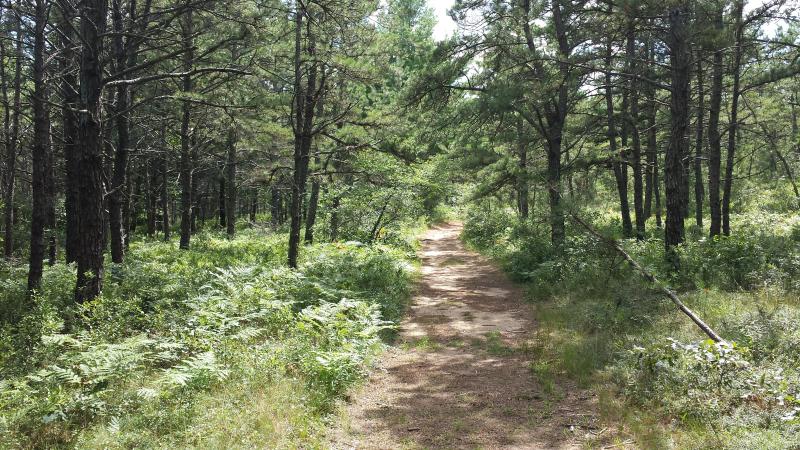Local pine barrens hold unique ecological diversity
Despite the name given them by the pilgrims, pine barrens are anything but desolate. Their ecology contains plant and wildlife uniquely adapted to the dessert-like landscape, some of it found nowhere else.
Southeastern Massachusetts is one of three areas in the country where the disappearing barrens can be found, including areas of Mattapoisett and Rochester.
Conservationist Brian Bastarache, a former Rochester resident, explained the biology of the barrens at the Nasketucket Bird Club’s monthly meeting at the Mattapoisett Library.
“It all has to do with ice and dirt,” Bastarache said.
Glaciers 10,000 years ago stirred up the dirt and sand leaving ruts with a lot of sandy, acidic soil where few things thrive. The pine barrens, which are also in Albany, New York and a patch of New Jersey, can be grassy but are classified as open canopy forests and scrublands, even though many have hesitated to call them forests in the past.
“It is a real forest, just a different kind of really neat forest,” said Bastarache.
The forest contains the scrappy scrub oak, blueberries, huckleberries, bay berries and teaberries. There are even rare, native cacti.
“None of these plants have to be tormented by dry conditions and low nutrients, but it’s their niche,” Bastarache said.
Pitch pines are the “king of the barrens.” The bonsai-like tree has thick bark that holds in moisture and helps to prevent fires from reaching the core.
“The needles burn up like magicians flash paper,” Bastarache explained, but that helps the fire to keep moving on while preserving the buds at the end of the branches.
After a fire, new needles shoot out of the trunk, a rare, adaptive quality not found in most Northeastern pines.
Their pine cones also open up after a fire, releasing seeds.
For the pine barrens, fire is a good thing, said Bastarache.
While developments on or near the barrens have made people afraid of the dry areas lighting up, he said without smaller fires a much larger, much harder to contain fire will erupt and burn up all the debris that has been allowed to collect.
Much of Myles Standish State Park is pine barren where some controlled burns have been done to maintain safety and healthy forests.
Fires give the pine barrens needed nutrients, and soon after, the forest has a burst of growth.
In fact, the Massachusetts pine barrens are the third most flammable area in the country, behind areas of California and the New Jersey pine barrens.
Despite the harsh conditions, the pine barrens are home to a number of interesting creatures, including the tiger beetle, named for its predatory skills. The hog nosed snake also calls the sandy landscape home. The snake has inverted teeth that allow it to “pop” the toads it eats. It also has a comical way of playing dead, said Bastarache. When threatened, the snake shows its belly and sticks out its tongue while emitting a smell of decay.
The Massachusetts barrens are also home to 25 threatened and endangered species, and they are at risk. Much of the country’s pine barrens are already gone. The majority of Long Island was pine barrens before development took over, Bastarache said.
The repeated intrusion of motorized vehicles in the local pine barrens disturbs the slow-growing plants and creatures that live there. Added with encroaching development and other environmental factors, 60 to 70 percent of the pine barrens have already been lost according to a 1998 figure. That number is certainly higher now, Bastarache said.
He recommended that the audience get out and experience the pine barrens, some of which can be found on the eastern side of Mattapoisett and patches of Rochester. He said paying attention to changes in the forest’s landscape will make it obvious when they transition to pine barren.
“Walk around in it, roll around in it, smell it, taste it,” he said.
More information on the pine barrens and advocacy for them can be found at the Southeastern Massachusetts Pine Barrens Alliance’s website. The nonprofit is dedicated to preserving the pine barrens.















